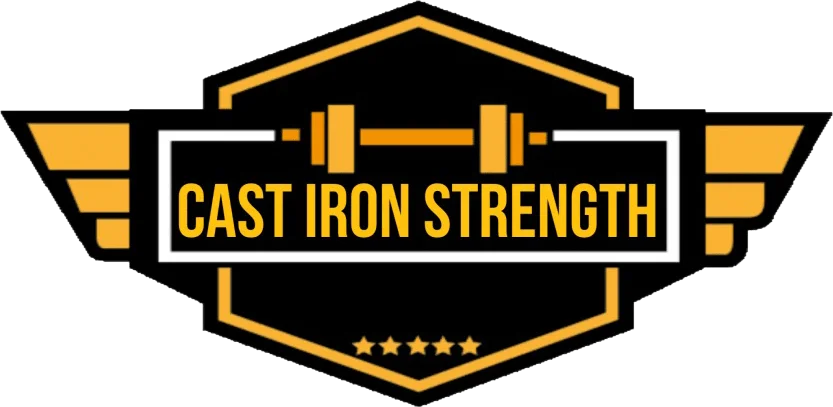TL;DR
- Shorter rest periods make cardiovascular exercise a lot more demanding.
- Athletes with lower levels of testosterone can be more susceptible to ratings of fatigue and changes in mood states.
- Counter movement jump is a reliable and sensitive measure of neuromuscular fatigue for up to 72 hours after a fatiguing exercise bout.
- if you want to increase power you are better splitting strength and power training. If you want to increase strength and induce hypertrophy then performing complex sessions is a good method. Over a 6 week period.
- Dehydration increases both physical and mental performance for repeated sprint tasks.
- Knee wraps decrease quadricep activation at higher intensities. The increased mechanical advantage around the joint decreases muscle activation leading to the need for increased load to achieve the same training adaptation.
- Foam rolling has a positive effect on range of motion but only with repeated use and the benefits of which will cease after a week of not rolling.
Effects of rest intervals on the metabolic demand of battling rope exercise.
Smith et al looked at the effects of 8 sets of 30 seconds battling rope exercise with either 1 minute or 2 minute rest. They had 10 women and 12 men who took part in the trial.
1 minute rest represented a 11.1% higher vo2 demand in men and a 13.5% higher vo2 demand in women. Energy expenditure was also greater for the 1 minute protocol 3% in men and 2.7% in women. Blood lactate and heart rate where also significantly higher in the 1 minute protocol.
TL;DR – Shorter rest periods make cardiovascular exercise a lot more demanding.
Effects of testosterone levels on moods states in young basketball players.
Miloski et al looked at the effects of an intensified period of training volume on Yo-Yo test, testosterone levels and Subjective mood and energy states. 16 players where split into two groups high testosterone and low testosterone.
After the intensified training period there was no significant difference in testosterone levels, both groups significantly increased their yo-yo test with no significant difference. The low testosterone group reported lower levels of energy and higher levels of fatigue during the training.
TL;DR – Athletes with lower levels of testosterone can be more susceptible to ratings of fatigue and changes in mood states.
Sensitivity of different tests to detect neuromuscular fatigue.
11 Male team sport athletes performed 6 trials of counter movement jump, squat jump, drop jump along with 3 trials of 20 meter sprint before and post yo-yo test (0, 24 and 72 hours post) to determined the reliability and sensitivity of the field tests.
Sprint showed the least variability, followed by counter movement and squat jump with drop jump being the most variable measure. Sprint test showed the biggest decrease at 0 hours but was unchanged after. Drop jump and CMJ showed moderate and small reductions 72 hours post exercise.
TL;DR – Counter movement jump is a reliable and sensitive measure of neuromuscular fatigue for up to 72 hours after a fatiguing exercise bout.
Muscle Strength, Power and Muscle adaptations after 6 weeks of compound or complex training.
Stasinaki et al looked at the effects of compound training (strength training and power training on alternative days) and complex training (strength and power training on the same day) in 18 young men over a 6 week peroid. Both groups utalised bench press, leg press, smith machine box squat and jumping exercises.
Performance in jumping, throwing and maximum strength in the ultalised exercises where assessed alongside architecture and size of vastus lateralis and gastrocnemius.
Compound training resulted in increased performance in jumping and throwing activities where complex training did not. Complex training resulted in significantly greater performance in strength Bench Press (5% vs 18%), Leg Press (17% v 28%) and Smith machine box squat (27% v 35%). Only complex training resulted in increases in cross sectional rea and a decrease in gastronmious fascicle length.
TL;DR – if you want to increase power you are better splitting strength and power training. If you want to increase strength and induce hypertrophy then performing complex sessions is a good method. Over a 6 week period.
Influence of dehydration on repeated sprint performance.
8 male baseball players completed 24 sprints 30 meter (3 sets of 8, 45 seconds between sprints and 3 minutes between sets) either 3% reduction in body weight via dehydration or hydrated. Mean sprint time was recorded for each session along with perceived recovery status, RPE for each sprint and session RPE where recorded.
Hydrated status showed a faster mean 30 meter time vs dehydrated sate (4.91 vs 5.12). Heart rates where significantly lower for the hydrated status and dehydrated status showed higher levels of perceived exertion (RPE) and lower levels of perceived recovery.
TL;DR – Dehydration increases both physical and mental performance for repeated sprint tasks.
Kinematic and sEMG Analysis of the back squat with and without knee wraps.
14 resistance trained men took part in four different conditions. 3 reps at 60 and 90% of 1 RM with or without knee wraps. For each trial vertical and horizontal bar displacement was measured, set RPE and muscle activity of the glutes (gluteus maximus) and quad (vastus laterus).
Between 60% and 90% intensities there where increased EMG for quads and glutes. RPE increased between 60 – 90% RM but there was no significant change between conditions. Knee wraps showed a significant decrease in quadriceps activation at 90% 1 RM when compared to no knee wraps.
TL;DR – Knee wraps decrease quadricep activation at higher intensities. The increased mechanical advantage around the joint decreases muscle activation leading to the need for increased load to achieve the same training adaptation.
Clinical relevance of foam rolling on hip extension angle during a lunge.
31 subjects where assigned either to the intervention (foam rolling, n=16) or control (no foam rolling, n=15) groups. There where 3 testing sessions with 2 lunges in each session both groups followed the same timelines. Foam rolling group performed foal rolling between each lunge in session 1 and 2 and 5 times during the week between sessions 1 and 2. They performed no foam rolling in the final week between sessions 2 and 3. Control group performed no foam rolling.
Dartfish software was used to determine hip extension and global perceived effect scale rating was used to determine the difference of the second to first lunge and from each session.
Hip extension angles returned to baseline after 1 week of no foam rolling. Global perceived effectiveness scales where higher for the foam rolling group and 29 of the 32 words of feedback contained positive words regarding foam rolling.
Foam rolling increased hip extension during the lunge but the increase was not seen in the first exposure.
TL;DR – Foam rolling has a positive effect on range of motion but only with repeated use and the benefits of which will cease after a week of not rolling.


















